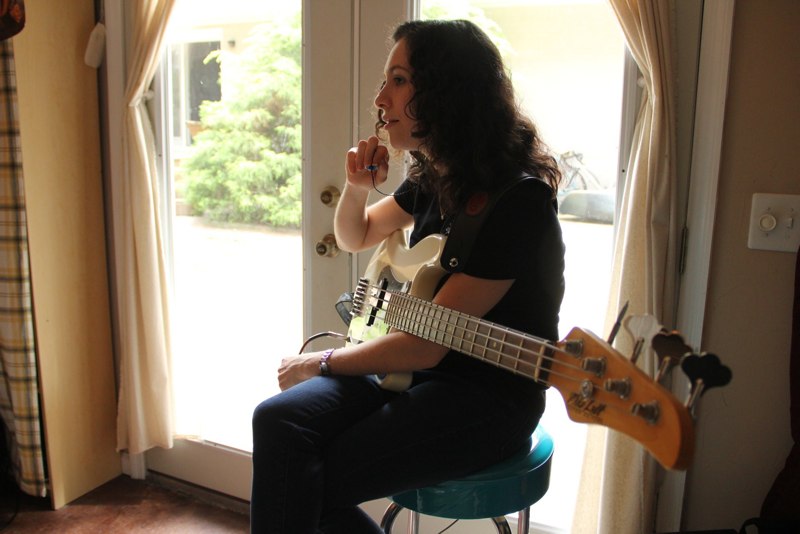The Lightbulb Moment: Easy Come, Easy Go

In true professional musician fashion, I recently received a set list for an upcoming gig and had a mini panic attack when I took a look at the final song. An anthem, that’s for sure, but one that is rarely attempted in a live setting. It’s a song that most people are familiar with, thanks to the fact that Wayne’s World deemed it the official sing-along of the classic rock era, yet it is far more complex than almost any other pop song that has made it to the radio. Full of operatic vocal movement, key changes, wicked guitar solos, and completed by a final gong hit, this tune (if you haven’t already guessed), is Queen’s “Bohemian Rhapsody.” With one week to get this song (and eleven others) under my belt, my first inclination was “how can I learn this quickly?” I began listing my options:
- Phone a friend (I’m pretty sure one of my buddies has played this before and probably has it charted out)
- Take advantage of the 24/7 audio-visual educational (and procrastinational) tool that has dominated modern society: YouTube
- Google it and find some sheet music to purchase as a PDF
- Find some bass tabs
- Go through my box of old music books for the copy of Best Of Queen that I purchased in high school after hearing “Under Pressure”
After taking a coffee break and looking at my schedule for the week, I decided that despite all of the shortcuts, it would probably be best for me to sit down and learn it the old fashion way — by ear. After all, that’s how I’ve always learned music. It would be challenging and time-consuming, but, as an overly prideful person, I felt like I might as well prove to myself that I can do it (otherwise, why else have I spent half of my life playing bass?).
Three days, a few “I can’t listen to this song anymore” mental breakdowns, and multiple pages of scribbled notes later, I think I’ve finally got it. Sure, it took more time that most songs, but I actually discovered some pretty cool musical nuggets: the modulations, chord voicings, and epic rock’n’roll climax that used to be on my periphery was now right in front of my eyes. I figured it out, all by myself, and could totally sit in with the actual band and do a respectable job. If you’ve never felt this sensation, it’s the equivalent of giving yourself a pat on the back, and it’s incredibly satisfying. So much so, that after listening to and playing along with the song dozens of times, I’m actually excited by the thought of playing it again.
For anyone who has dedicated time to learning something — really learning something — I hope that this story resonates with you. Though it is a long-winded example of “no pain, no gain,” it demonstrates that the process of learning is equally as important as what you’re learning; the result is a deeper appreciation for and internalization of the information. Furthermore, when you go through the more personal effort to learn or practice something, you realize that you’ve truly earned the information. It’s incredibly gratifying to feel pride in what you’ve accomplished and, ultimately, to prove to yourself that you’ve improved.
In this modern age of technology, where information is both available and instantaneous, the educational shortcuts are undeniably seductive. Why spend hours figuring out how to play a song when you can watch a video on how to do it? Or use a program to slow it down? Or schedule a Skype lesson with the guy who played on the record?
On the one hand, it’s fantastic that we have so many resources at our disposal. We can isolate tracks, loop parts, watch videos on how to do things, pay $0.99 for sheet music, and enroll in online educational courses. There are more options and opportunities for learning than ever before.
On the other, it can give us permission to be lazy. It’s just so easy to find the isolated bass track and watch someone play along. I can Google a song title and find a dozen different bass tabs for it. I can ask a friend of mine to send me a picture of their chart and boom, three seconds later, I have it stored on my iPad.
In this way, the quest for information has changed — the process of discovery and acquisition can be as easy as you’d like to make it. However, taking on the responsibility of learning and finding satisfaction from your work is incredibly important. If you find yourself in a rut, it’s probably because you aren’t being challenged and you’re missing this sense of accomplishment. It’s always good to have a reason to pat yourself on the back, even if it’s just from perfecting a particular song, bass line, or exercise. So, the next time you need to learn something, try giving yourself a little more time and don’t take any shortcuts. The more time and dedication you have while learning something, the more it will stick with you. After all, I believe it was Freddie Mercury who said, “easy come, easy go.”
Ryan Madora is a professional bass player, author, and educator living in Nashville, TN. In addition to touring and session work, she teaches private lessons and masterclasses to students of all levels. Visit her website to learn more!



